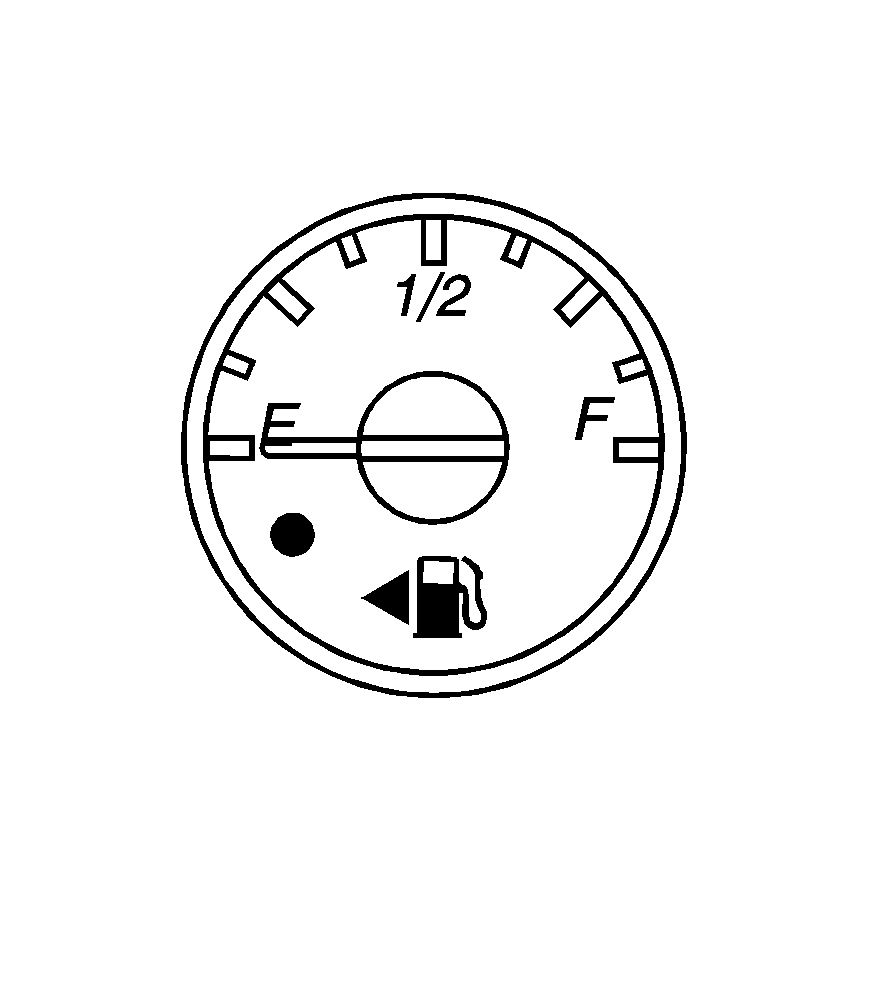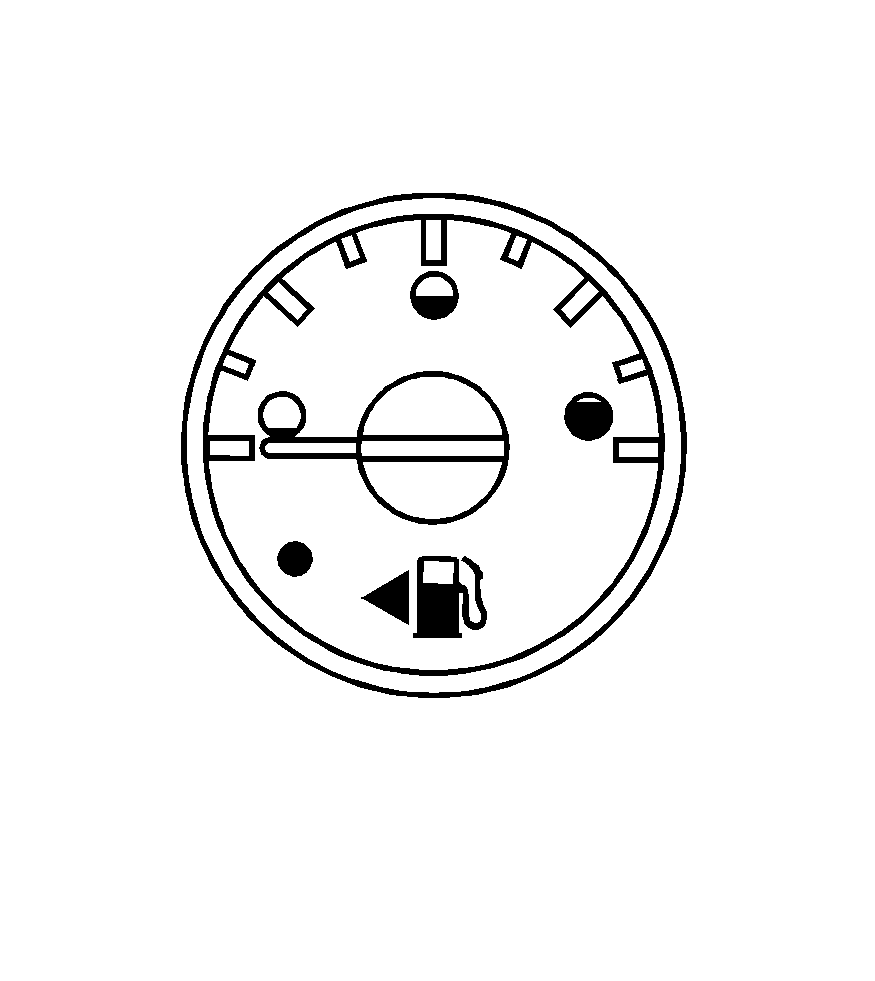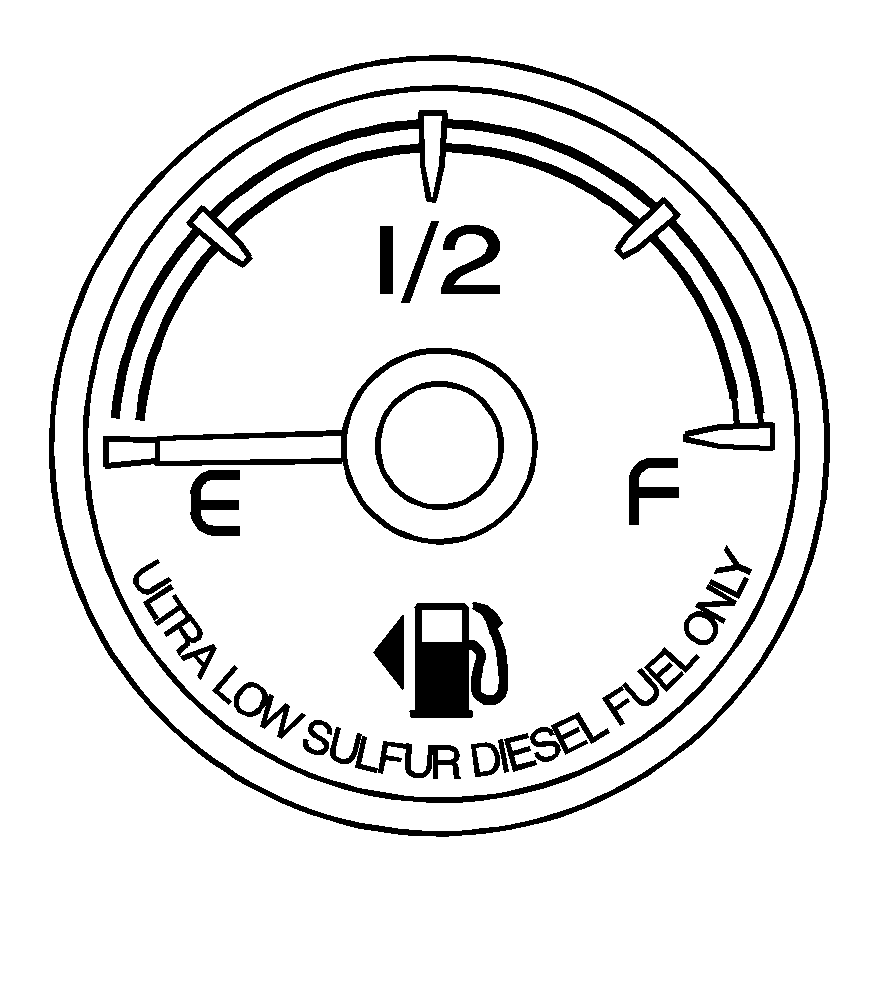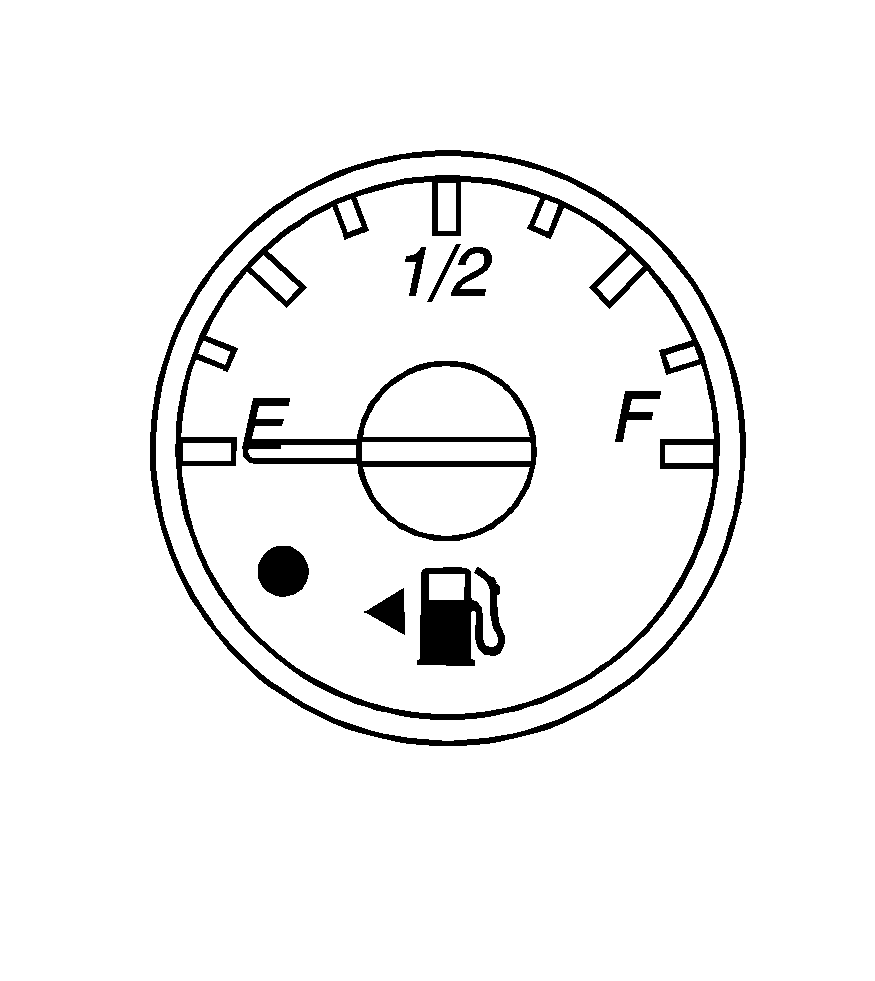United States

Canada

The fuel gage, when the ignition is on, tells you about how much fuel you have left in your tank.
The gage will first indicate empty before you are out of fuel, and you should get more fuel as soon as possible.
Listed are four situations you may experience with your fuel gage:
| • | At the gas station, the fuel pump shuts off before the gage reads full. |
| • | It takes a little more or less fuel to fill up than the fuel gage indicated. For example, the gage may have indicated the tank was half full, but it actually took a little more or less than half the tank's capacity to fill the tank. |
| • | The gage moves a little when you turn a corner or speed up. |
| • | The gage does not go back to empty when you turn off the ignition. |
None of these indicate a problem with the fuel gage.
If your vehicle has the DURAMAX Diesel engine, see the DURAMAX Diesel manual for more information.
Pickup Models, United States version shown

Van Models, United States version shown

When the ignition is on, the fuel gage shows you approximately how much fuel you have left in your tank. The gage will first indicate E (empty) before you are out of fuel, but you should get more fuel as soon as possible.
Listed are four situations you may experience with your fuel gage:
| • | At the gas station, the fuel pump shuts off before the gage reads F (full). |
| • | It takes a little more or less fuel to fill up than the fuel gage indicated. For example, the gage may have indicated the tank was half full, but it actually took a little more or less than half the tank's capacity to fill the tank. |
| • | The gage moves a little when you turn a corner or speed up. |
| • | The gage doesn't go back to E (empty) when you turn off the ignition. |
None of these indicate a problem with the fuel gage.
For information on how to fill your fuel tank, see Filling the Tank .
Your vehicle also has a fuel cooler. To clean, powerwash the bottom of the vehicle.
